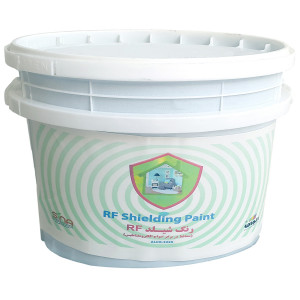| Alvan Paint Co. |

| No Title | 0.02 MB |
| Registration Date | 27 Oct 2020 |
| Revision Date | 27 Oct 2020 |
| Share |
Construction Masonry Materials
PaintUsing nanoparticles in water-based paints reduces electromagnetic fields (within the frequencies between 8-12 gigahertz) which are harmful for body biological activities and also cause problems in places having sensitive electrical, electronic and telecommunication devices. In this test, in order to measure transmission, reflection and absorption of electromagnetic wave, samples were put in a waveguide and electromagnetic properties were measured. A frequency bandwidth between 8-12 gigahertz was selected. Reducing in transmission rate of waves in the above mentioned product has been accompanied by an increase in waves reflection.
Environmental pollution is one of the most serious problems facing humanity and other life forms on our planet today ,and has changed the environment around us. These changes are due to the development of technology and industry which have disturbed the ecological process of living organisms. One of the main environmental pollution is electromagnetic waves, so called, “electromagnetic pollution”. Electromagnetic shielding is the practice of reducing the electromagnetic field in a space by blocking the field with barriers made of conductive or magnetic materials. This shielding is usually applied to places such as data centers, hospitals, military sites, petrochemical sites according to the use of sensitive electronic and telecommunication equipment. In addition, the body exposure to electromagnetic field can disturb biological activities of a body. Disturbing biological activities of the body can lead to pain and many problems. This product is a water-based paint useful for the electromagnetic shielding |(within the frequencies between 8-12 gigahertz). Nanoparticles are used to attain this kind of properties. Electromagnetic shielding is obtained by the use of materials which reduce the electromagnetic fields, and are also known as faraday cages. The amount of reduction depends very much upon the material used, its thickness, the size of the shielded volume and the frequency of the fields of interest and the size, shape and orientation of apertures in a shield to an incident electromagnetic field.